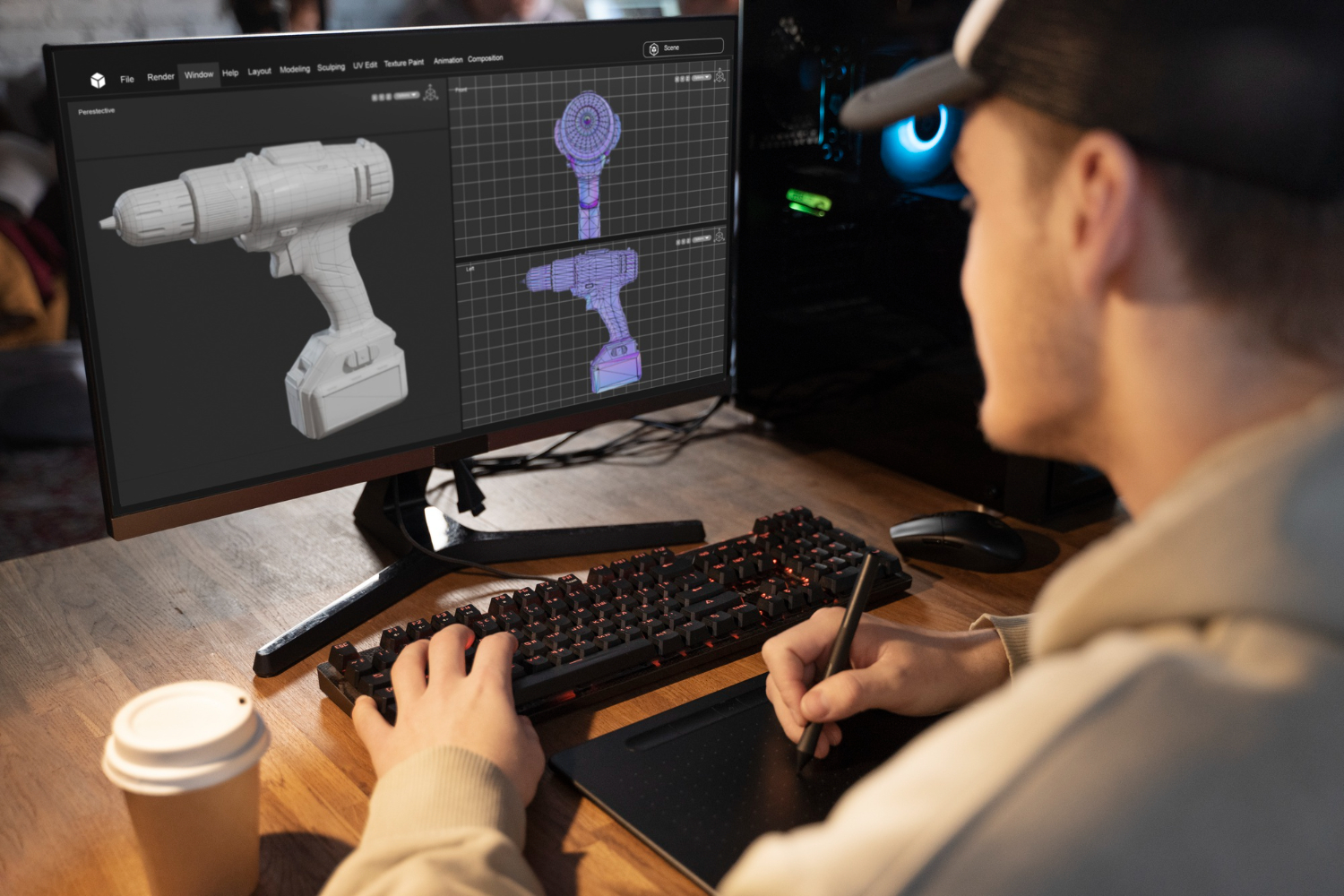Most of us associate digital design with methods first adopted in the early 2000s. However, basic approaches such as CGI were actually introduced as far back as the 1970s (1). Thanks to the rise of virtual prototyping software, we are once again beginning to experience another profound leap forward.
Virtual Prototyping Explained
It is first important to understand the fundamentals of virtual prototyping if we hope to apply these techniques to the world of digital design. Virtual prototyping represents a means by which the properties of a specific object can be simulated within a virtual environment (2). However, this is only the beginning.
This approach has advanced to the point that it is able to accurately replicate the properties of an object so that the tests themselves provide tangible real-world results. In other words, users will no longer have to spend the time constructing physical mock-ups during the developmental cycle. Please note that this is only a general overview. It is always possible to find out more about ultra-realistic virtual prototyping by performing additional research.

What Metrics Can Virtual Prototyping Address?
Thanks to cutting-edge algorithms, it is now possible to use this technology to analyse numerous variables within the purely digital domain. Consider the following examples:
- Implementing augmented reality (AR) environments.
- Three-dimensional modelling.
- Creating a digital “twin” of a physical object.
- Developing a host of different simulations to appreciate how the object would respond to such stimuli.
Now that we have begun to appreciate the flexibility of this advanced software, it is wise to illustrate the practical side of virtual prototyping by highlighting a real-world example.
Bridging the Gap Between Theoretical and Realistic
Let us imagine for a moment that you are employed within the research and development section of a multinational car manufacturer. The company has recently proposed a new vehicle slated to transform the entire industry. In this situation, virtual prototyping can be used to design unique aesthetics, to analyse performance during various possible weather conditions, to evaluate braking power, and to engineer a comfortable interior.
While the agile nature of virtual prototyping is (arguably) one of its most important features, we need to stress the pragmatic side of the equation. The ability to create realistic digital mock-ups with the help of VR and AR can likewise offer a host of cost-saving advantages. Furthermore, the processes themselves may be completed within a relatively short period of time; enhancing overall throughput. These are some of the reasons why major manufacturers such as BMW have chosen to incorporate virtual prototyping into their existing developmental strategies (3).
What is the Future of Virtual Prototyping?
Most experts agree that the techniques associated with virtual prototyping will continue to become more refined. The dynamic nature of these systems should also expand; allowing users to modify parameters, and to create even more accurate models. Furthermore, we have already begun to see an increased demand across cutting-edge sectors such as semiconductor production (4). We must also wonder if this digital technology might eventually find its way into the consumer marketplace; allowing average individuals with little prior experience to leverage the advantages outlined above.
As the need for precision becomes even more critical throughout countless industries, there is little doubt that virtual prototyping should enjoy a bright future.
Sources:
- https://www.britannica.com/art/graphic-design/The-digital-revolution
- https://bisresearchreports.medium.com/understanding-virtual-prototyping-and-its-pros-and-cons-a45521bed453
- https://www.press.bmwgroup.com/global/article/detail/T0317125EN/munich-pilot-plant:-bmw-group-uses-augmented-reality-in-prototyping?language=en
- https://semiengineering.com/pressure-builds-to-adopt-virtual-prototypes/

Founder Dinis Guarda
IntelligentHQ Your New Business Network.
IntelligentHQ is a Business network and an expert source for finance, capital markets and intelligence for thousands of global business professionals, startups, and companies.
We exist at the point of intersection between technology, social media, finance and innovation.
IntelligentHQ leverages innovation and scale of social digital technology, analytics, news, and distribution to create an unparalleled, full digital medium and social business networks spectrum.
IntelligentHQ is working hard, to become a trusted, and indispensable source of business news and analytics, within financial services and its associated supply chains and ecosystems










